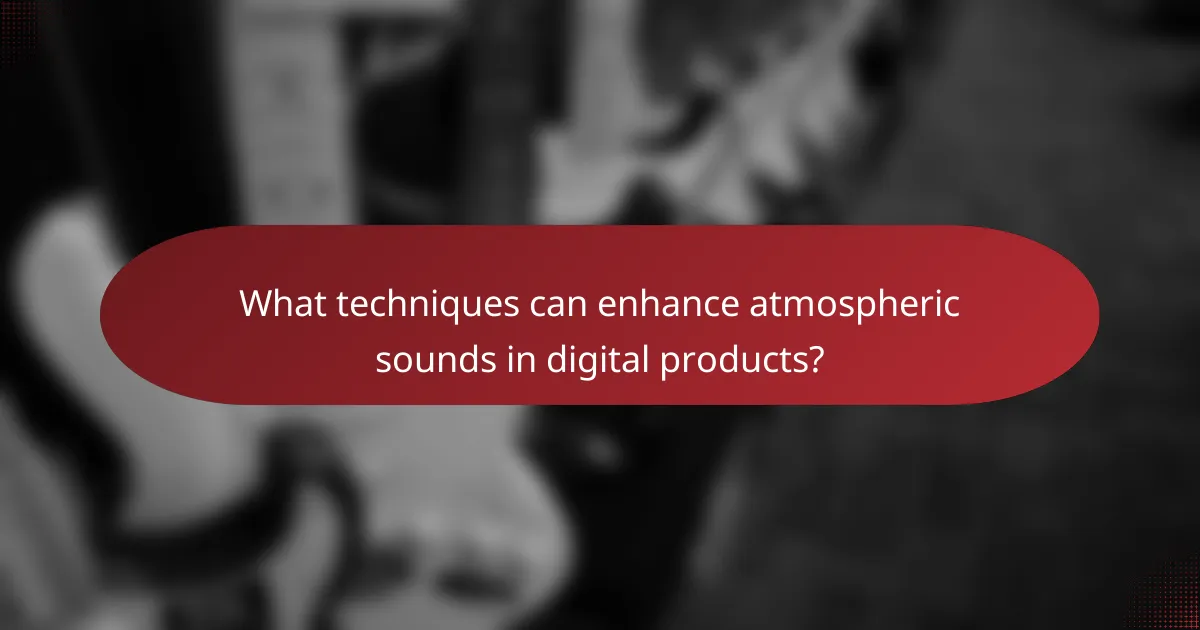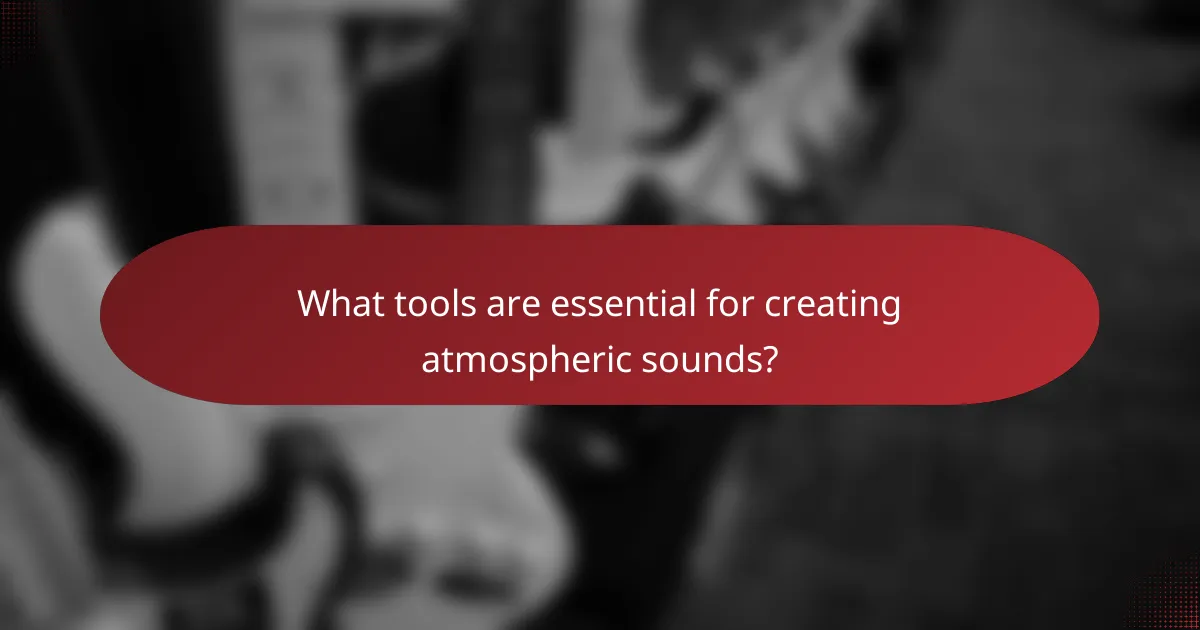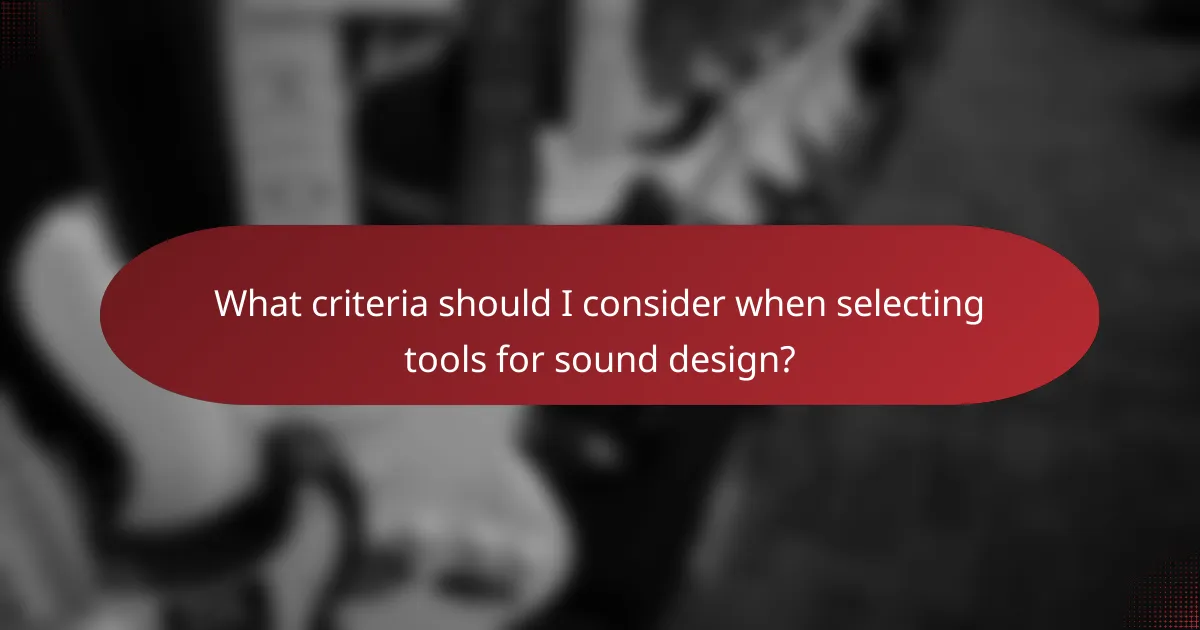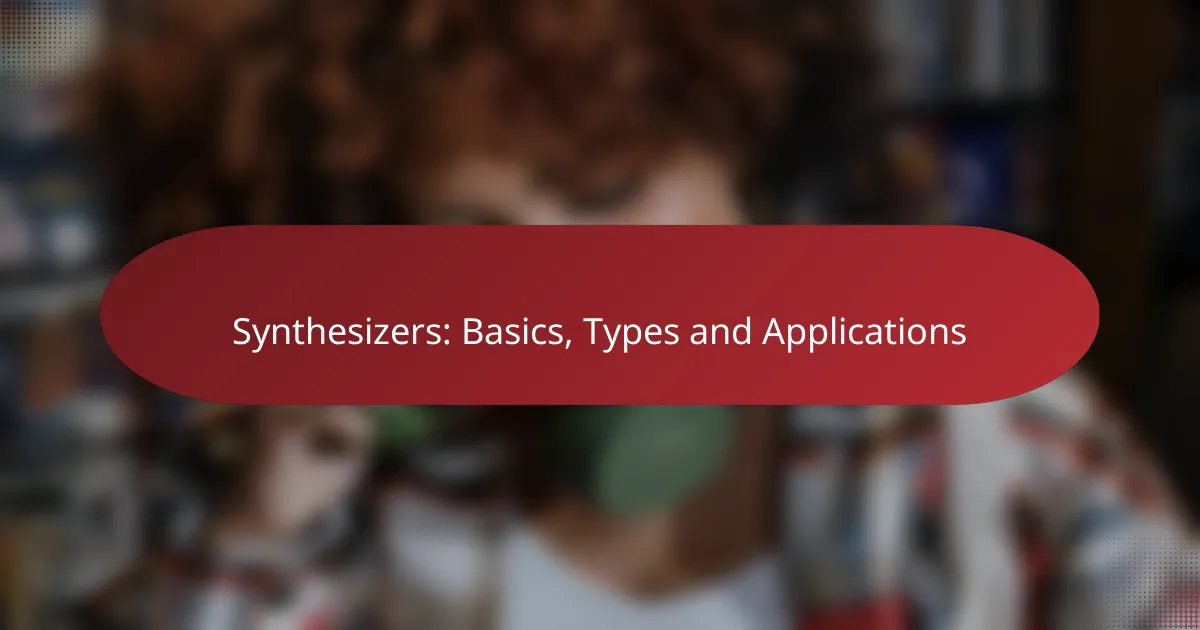Atmospheric sounds play a crucial role in enhancing user experiences in digital products, utilizing techniques such as layering, field recordings, and spatial audio. By employing essential tools like digital audio workstations and specialized plugins, sound designers can create immersive soundscapes that evoke emotions and engage listeners. Exploring innovative approaches to sound design allows for the development of unique audio experiences that deepen the emotional resonance and spatial quality of the content.

What techniques can enhance atmospheric sounds in digital products?
Techniques to enhance atmospheric sounds in digital products include layering, field recordings, spatial audio, reverb, and soundscapes. These methods create immersive experiences that engage users and evoke emotions through sound design.
Layering ambient textures
Layering ambient textures involves combining multiple sound elements to create a rich, immersive background. This technique can include sounds like wind, water, or distant chatter, which together form a cohesive atmosphere. Aim for a balance in volume and frequency to avoid overwhelming the listener.
Consider using different types of sounds, such as natural and synthetic, to add depth. For example, layering a soft synth pad with nature sounds can create a calming effect, while contrasting textures can evoke tension or excitement.
Using field recordings
Field recordings capture real-world sounds, providing authenticity to your atmospheric audio. These can include sounds from nature, urban environments, or specific events, adding a unique character to your product. Ensure high-quality recordings to maintain clarity and richness.
When using field recordings, consider the context of your product. For instance, a meditation app may benefit from serene nature sounds, while a game might use urban noise to enhance immersion. Always obtain necessary permissions if recording in public spaces.
Implementing spatial audio
Spatial audio creates a three-dimensional sound experience, allowing users to perceive sound direction and distance. This technique enhances immersion by simulating how sound behaves in real life. Use software that supports binaural or surround sound formats for optimal results.
When implementing spatial audio, test your sounds in various environments to ensure they translate well across devices. Keep in mind that not all users will have the same audio setup, so consider providing options for stereo and spatial formats.
Applying reverb and delay
Reverb and delay effects can significantly enhance atmospheric sounds by adding depth and space. Reverb simulates the natural reflections of sound in an environment, while delay creates echoes that can enrich the audio landscape. Use these effects judiciously to avoid muddying the mix.
Experiment with different settings to find the right balance. For instance, a longer reverb time can create a sense of vastness, while a short delay can add subtle texture. Always listen critically to ensure these effects serve the overall atmosphere.
Utilizing soundscapes
Soundscapes are curated collections of sounds that create a specific environment or mood. They can transport users to different settings, such as a bustling city or a tranquil forest. Crafting effective soundscapes requires careful selection and arrangement of sounds to evoke the desired emotional response.
Consider the narrative or experience you want to convey. For example, a soundscape for a relaxation app might include gentle waves, birdsong, and soft wind. Aim for a seamless blend of sounds that feels natural and immersive for the listener.

What tools are essential for creating atmospheric sounds?
Creating atmospheric sounds requires a combination of software and plugins that enhance audio manipulation and sound design. Essential tools include digital audio workstations (DAWs), sample libraries, and specialized plugins that allow for intricate sound layering and effects.
Logic Pro X
Logic Pro X is a powerful DAW favored for its extensive library of sounds and intuitive interface. It offers built-in tools like the Space Designer reverb and various synths that are ideal for crafting atmospheric textures. Users can easily layer sounds and apply effects to create immersive soundscapes.
To maximize its potential, explore the Alchemy synth for complex sound creation and utilize the Flex Time feature for precise audio editing. Regularly updating your software ensures access to the latest features and sound packs.
Ableton Live
Ableton Live is renowned for its versatility in live performance and studio production, making it a top choice for atmospheric sound creation. Its session view allows for easy experimentation with loops and samples, enabling quick adjustments to sound layers.
Utilize the built-in effects like Echo and Reverb to enhance spatial qualities. The Max for Live feature also allows users to create custom devices, expanding the capabilities for unique atmospheric sounds.
Native Instruments Kontakt
Native Instruments Kontakt is a leading sampler that provides access to a vast range of high-quality sound libraries. It excels in creating atmospheric sounds through its ability to manipulate samples with various effects and scripting options.
Consider using Kontakt’s built-in effects such as convolution reverb and modulation to shape your sounds. Additionally, explore third-party libraries that focus on ambient and atmospheric soundscapes for added inspiration.
Waves Audio plugins
Waves Audio offers a variety of plugins that are essential for enhancing atmospheric sounds. Their reverb and delay plugins, such as H-Reverb and SuperTap, are particularly effective for creating depth and space in your mixes.
When using Waves plugins, pay attention to the mix settings to avoid overwhelming your sound with effects. A/B testing different settings can help you find the right balance for your atmospheric compositions.
Splice for sound samples
Splice is a popular platform for accessing a vast library of sound samples, including atmospheric sounds. It allows users to browse and download individual samples or entire packs, making it easy to find the perfect sounds for your projects.
To effectively use Splice, consider searching for specific keywords related to atmosphere, such as “ambient” or “nature sounds.” Regularly check for new releases to stay updated with fresh content that can inspire your sound design.

How can I creatively approach atmospheric sound design?
Creative approaches to atmospheric sound design involve exploring unique techniques and tools to craft immersive audio experiences. By thinking outside traditional methods, you can enhance the emotional depth and spatial quality of your soundscapes.
Experimenting with unconventional instruments
Using unconventional instruments can lead to unexpected and rich textures in your atmospheric sound design. Consider incorporating everyday objects, such as glass bottles, metal sheets, or even found sounds from nature, to create unique sonic elements. This experimentation can add authenticity and intrigue to your compositions.
For example, using a waterphone or a hang drum can produce ethereal sounds that evoke a specific mood. Don’t hesitate to modify these instruments or combine them with digital effects to further expand your sonic palette.
Incorporating silence and pauses
Silence and pauses are powerful tools in atmospheric sound design, allowing listeners to absorb the sound environment fully. Strategic use of silence can create tension, highlight specific sounds, or enhance the overall emotional impact of a piece. Aim for moments of quiet that contrast with more intense sound sections.
Consider the pacing of your audio. A well-placed pause can draw attention to a particular atmospheric element, making it resonate more deeply with the audience. Experiment with varying lengths of silence to find the right balance for your composition.
Using generative sound techniques
Generative sound techniques involve creating audio that evolves over time, often using algorithms or software to produce dynamic soundscapes. This approach can lead to unique and ever-changing atmospheres that engage listeners in a novel way. Tools like Max/MSP or Pure Data can help you explore generative methods effectively.
When using generative techniques, consider setting parameters that guide the sound’s evolution while allowing for spontaneity. This balance can result in rich, layered textures that feel organic and immersive.
Collaborating with visual artists
Collaborating with visual artists can enhance your atmospheric sound design by integrating audio with visual elements, creating a more holistic experience. This partnership can inspire new ideas and approaches, as each medium influences the other. Consider working with filmmakers, animators, or installation artists to explore different contexts for your soundscapes.
During collaboration, maintain open communication about the emotional and thematic goals of the project. This alignment can help ensure that the audio complements the visual elements effectively, resulting in a cohesive and impactful final piece.

What are the best practices for mixing atmospheric sounds?
Mixing atmospheric sounds effectively involves balancing various elements to create an immersive experience. Key practices include managing frequency ranges, utilizing panning for spatial depth, and applying automation to enhance dynamics.
Balancing frequencies
Balancing frequencies is crucial for ensuring that atmospheric sounds blend well without clashing. Focus on identifying the dominant frequencies in each sound and adjust their levels to avoid muddiness. For instance, low-frequency sounds like rumbling should be kept subtle, while higher frequencies can add clarity and presence.
A common approach is to use equalization (EQ) to carve out space for each sound. Consider applying a high-pass filter to remove unnecessary low-end frequencies from sounds that don’t require them, allowing more room for bass elements. Aim for a balanced mix where no single frequency range overwhelms the others.
Creating depth with panning
Panning is an effective technique for creating a sense of space and depth in atmospheric mixes. By placing sounds across the stereo field, you can simulate a more realistic environment. For example, pan ambient sounds slightly left or right to give the listener a sense of directionality.
When panning, consider the relationship between sounds. For instance, if you have a distant thunder sound, pan it wider than closer sounds like raindrops. This technique helps to establish a three-dimensional soundscape, making the mix feel more immersive.
Using automation for dynamics
Automation allows you to control the dynamics of atmospheric sounds over time, enhancing their emotional impact. By automating volume, panning, or effects, you can create movement and evolution within the mix. For example, gradually increasing the volume of a wind sound can simulate a building storm.
Be mindful of the overall mix when applying automation. Too much dynamic variation can be jarring, so aim for subtle changes that enhance the atmosphere without distracting from the overall experience. A good rule of thumb is to keep automation changes within a range that feels natural and cohesive.

What criteria should I consider when selecting tools for sound design?
When selecting tools for sound design, consider compatibility, functionality, and your specific creative needs. The right tools should integrate smoothly with your workflow and enhance your ability to create atmospheric sounds effectively.
Compatibility with DAWs
Compatibility with Digital Audio Workstations (DAWs) is crucial when choosing sound design tools. Ensure that the software or hardware you select can seamlessly integrate with your preferred DAW, whether it’s Ableton Live, Logic Pro, or Pro Tools.
Check for support of common file formats and protocols like VST, AU, or AAX. This ensures that your tools can work with existing projects and plugins without issues. For instance, if you primarily use a DAW that supports VST plugins, prioritize tools that offer VST compatibility.
Additionally, consider the system requirements of the tools. Some advanced sound design software may require more processing power or RAM, which could affect performance on older systems. Always verify the specifications to avoid bottlenecks in your workflow.










